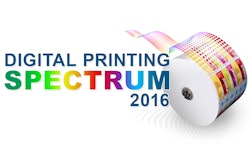During a recent on-site visit to PCI’s Rockford facility, and via a subsequent question-and-answer session, Healthcare Packaging discussed the contract packager’s serialization efforts past, present and future. The answers below come from Justin Schroeder, Executive Director, Marketing, Business Development & Design, and from Ray Hook, Senior Manager, Global Serialization Services.
Describe the overall hierarchy of PCI’s serialization systems.
There are essentially three levels of the hierarchy and data flow. The highest level is the B2B interface between the client and PCI, effectively a “bridge” between the client’s Level 4 system (EPCIS) and PCI’s Level 3 (site systems). This is where information is shared at the onset of the packaging run as well as the completion of the finished batch/lot.
To initiate the process, PCI’s system will alert the client that we need the bulk serialized number data to execute the packaging run. PCI’s system is mapped such that a single interface with the client will enable their system to “talk to” any of our global sites. We have engineered our interface with a flexible approach such that clients can use several file formats for data exchange. This prompt will draw a pool of serialized codes for use in the packaging operation.
These codes cascade through our Antares system, from enterprise level down to line level for use in the batch. In the packaging process codes will be utilized in the packaging operation and applied to packages and ultimately “commissioned” as good codes. PCI also establishes aggregation, the parent-child relationship between the saleable unit and its secondary/tertiary packaging.
Some codes may also be designated as scrapped or waste codes. In the release process, both the commissioned codes and the scrapped codes will be transmitted from the line level to the enterprise level, and then ultimately back to the client via the network interface, providing for downstream authentication.
What type of investment has PCI made in serialization?
PCI globally operates in excess of 250 packaging lines. While some of those lines are primary packaging operations that are largely unaffected by serialization, others are impacted and investments are happening to add serialization capabilities for a variety of drug delivery forms. PCI is expanding serialization capabilities, both integrated operations as well as standalone “FlexSuite™” capabilities, at each of its packaging sites across North America and Europe. It is a significant ongoing multimillion-dollar investment, which we project will continue well into 2017 and beyond as the demand continues to rapidly increase.
How many total packaging lines/suites are equipped to handle serialization within PCI worldwide? What is the ultimate goal? How often do they run, what is their output, and what are the company’s goals for them?
PCI supports packaging for a variety of drug product markets, including Over-the-Counter medicines, branded and generic ethical prescription drugs, as well as animal health products, medical devices, and others. We support human health medicines destined to more than 100 countries around the world. Track-and-trace regulations are focused to the “saleable unit and case” for ethical drugs, with the U.S. requirements coming to bear formally in 2017 and the European Union in 2019/2026.
We anticipate this will require serialization for a large proportion of our packaging lines over the next 18 to 36 months as the demand continues to increase. By the end of 2015, PCI had tripled their serialization capacity. We have been pleased in the ability of the Antares equipment to integrate into our existing processes with no overall impact to Overall Equipment Effectiveness, so our output yield has been typically neutral.
As a contract packager, flexibility is always critical. How does flexibility fit into PCI’s overall serialization strategy?
In evaluating serialization equipment providers and integrators for our global platform, flexibility was paramount as a factor of our vendor selection. Antares is a proven technology platform, having already executed 300 plus global installations at the time we executed our evaluation more than two years ago.
The modular nature of their equipment and ability of their platform to be adapted and redeployed for varying applications was a critical element. This has allowed us to integrate their technologies into our high-speed automated and multistep packaging lines, as well as utilize their equipment for our ala carte FlexSuite operations as an adaptable solution for varying sizes and packaging configurations.
How does PCI justify the economic investment in serialization, and does your level of investment provide the company with competitive differentiation?
PCI has been a leader in the contract packaging market for many years. Despite the various delays and changes in application over the past decade, it was apparent that serialization was ultimately going to take root. We proactively developed our solutions and expertise to be positioned to support our clients. This included active participation in groups like GS1, Global Track & Trace, and others. We have benefitted from being able to support commercial serialization applications over the past few years, and are now leveraging those key learnings as we expand our serialization capacity. As we engage pharmaceutical and biotech customers across the industry, it is apparent that they are far behind in their preparedness and will need expert partners like PCI to help them meet their serialization obligations.
PCI’s serialization investment includes machinery and software? What else?
From an infrastructure perspective there is the Antares equipment, and the software interface at both packaging line and enterprise level. All of this operates through a redundant network and server/database architecture on each site. In addition, this employs systems to create and manage the B2B communication technology between PCI and our clients. This may be a direct connection, or potentially via a cloud-based third-party application such as Axway or TraceLink.
Describe PCI’s search for serialization systems suppliers.
Our search was extensive and focused around key areas. First, we required a demonstrated and established solution. Many suppliers had a concept or a work-in-progress, but we wanted a system that was established and proven.
Second, the system had to give us flexibility, both in the modules/systems technology as well as the application architecture. As a contract packager, we have a variety of packaging applications, lines at facilities around the world and customers with varying needs.
The solution had to be best-in-class, flexible and redeployable. Third, the solution needed to be easy to operate for our staff. Serialization is complicated enough, so we wanted a technology and interface that was intuitive and easy to deploy in our existing operations.
The search ultimately took between 12 and18 months, led by a core group of IT and Operations professionals from our staff. We ultimately selected Antares as our global provider, with Xyntek as our U.S. integration partner. We have been pleased with the Antares product.
What types of coding/printing equipment do you require for serialization, and what other equipment did PCI need to invest in for these efforts?
For different applications we employ different coding technologies, but where possible we lean towards laser coding applications. Laser provides a clean and consistent image application, as well as better consistency for image clarity for our automated vision inspection systems. Our serialization equipment utilizes laser coding, although some models have an alternate inkjet system for clients that may prefer that coding methodology. The Antares equipment and technology mirrors many of the technologies we utilize for bottling, blistering, vial labeling, etc.
What details are printed for a serialized code, how do they vary from primary to secondary to tertiary packaging and how do you and your customers define aggregation when it comes to serialization?
The contents of a serialized datamatrix (or a linear barcode for China) is determined by each specific country regulation. This is one of the challenges of global serialization. There are widely varying requirements depending on the market destination. Most countries opt for GTIN, serial number, drug lot/batch number and expiry date. Some add extra fields such as NTIN (National Item Number) or manufacturing date. China, for example, only contains one code, which is a combination of the company ID and serial number (supplied by the Chinese government). Data is always built to a specific standard, with codes in a specific order. Brazil, alternatively, is currently comprised of a barcode and combination of up to six lines of applied human-readable code.
What have been some of the “lessons learned” for PCI in developing serialization for your customers, and how does the company address those matters?
Artwork has been, and continues to be, the biggest challenge for serialization implementation. Many processes established for artwork control within our clients’ systems really hamper the efficiency with which they look to push their overall serialization strategy implementation.
For the activity of implementing serialization, we have seen positive impact on line processes and efficiencies. In particular, we have seen that the additional level of assurance provided by the serialization and aggregation steps create a world of strong accountability and minimization of loss in the packaging process. It has actually enabled us to remove redundant equipment such as checkweighers, due to the additional level of control provided in the system through positive identification of each pack.
What changes has PCI seen since diving into serialization, what challenges do you see moving forward, and can the company estimate the percentage of business serialization will eventually provide?
We have substantially invested both in capital equipment and technological resources as well as investing in a dedicated full-time team of professionals to support the serialization level we are experiencing today. It is only going to increase, and by all accounts substantially. As we engage current and prospective clients we see the lack of readiness in the industry. Capable CMO’s will have to fill the gap, both for the machine capacity and readiness as well as the expertise in executing serialization on a large scale. This is also why PCI offers a Serialization-Only Service if required, typically fulfilled through our FlexSuite technology.
What happens if companies aren’t compliant with serialization in time to meet regulations? What are the key dates?
In general, governments have imposed various dates and controls to ensure adherence to their required regulations. After all, one of the key reasons for serialization is the reduction of counterfeit and drug diversion for global medicines, so it is in everyone’s interest to adhere to the timelines. Most countries are allowing a period of time to “flush” non-serialized product from the supply chain. In the U.S., although the primary “must be serialized” date is late Nov 2017, distributors can distribute non-serialized product through November 2019, after which point it cannot be moved. As with the original reporting of movements date (January 2015), there are fines for non-compliance leading up to, and in some cases, license removal.
























